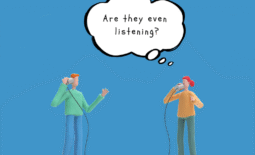The Subtle Ways People Shame You (and How to Shut It Down)
Shame is one of the most powerful and isolating emotions we experience. It thrives in secrecy, making us question our worth, our choices, and even our identity. While some forms of shaming are obvious—like outright insults or public humiliation—others are much sneakier. The subtle, insidious ways people shame us can be just as damaging (if nor more), eroding our confidence and making us second-guess ourselves.
Recognizing these covert shaming tactics is the first step toward breaking free from their hold. Here are some of the sneaky ways people can shame you—and how to stand your ground.
- The “Helpful” Critique
Sometimes, shame hides behind the mask of concern or advice. A friend, family member, or colleague might say, “I just don’t want you to embarrass yourself,” or “Are you sure you want to wear that?” The underlying message? You’re not good enough as you are.
How to Shut It Down: Respond with confidence: “I appreciate your input, but I feel good about my choice.” This asserts your autonomy while setting a clear boundary.
- The Comparisons Game
Nothing fuels shame like being compared to someone else. Statements like “Your sister always had her life together” or “Why can’t you be more like so-and-so?” can make you feel like you’re perpetually falling short.
How to Shut It Down: Remind yourself that your journey is your own. A direct response could be: “I respect them, but I’m on my own path, and that’s okay.”
- Backhanded Compliments
“You’re really brave for wearing that.” “Wow, I could never be so bold in your situation.” Comments like these pretend to be positive but actually carry an underlying jab.
How to Shut It Down: Call it out with a simple, direct question: “What do you mean by that?” This forces the person to clarify their intent and can make them realize how their words came across.
- Guilt-Tripping as a Form of Shame
Guilt and shame are often tangled together. Someone might say, “I guess I’ll just do it myself since you’re too busy,” or “If you really cared, you’d make time.” The message? You should feel ashamed for setting boundaries or prioritizing yourself.
How to Shut It Down: A firm but kind response like, “I understand you’re disappointed, but I can’t do that right now” lets them know you’re standing by your decision.
- Bringing Up the Past to Keep You Small
Ever had someone throw an old mistake in your face at just the right moment to make you feel small? “Remember when you totally messed that up? Let’s not repeat that.” It’s a way of holding past failures over you to make you doubt yourself.
How to Shut It Down: A calm response like, “I’ve learned a lot since then, and I’m moving forward” can help you take control of the conversation without getting defensive.
- Shame Disguised as Concern
People who feel the need to “help” you might say, “I’m just worried you’re making a mistake,” or “I don’t want you to get your hopes up.” While sometimes well-meaning, this can undermine your confidence and make you doubt your abilities. Parents can often do this, not recognizing what I call the unintended net effect of what they are saying.
How to Shut It Down: A simple, confident response like, “I appreciate your concern, but I trust myself to handle it” reinforces your self-trust.
- Silent Judgment and Nonverbal Cues
Sometimes, shaming doesn’t even require words. An eye roll, a smirk, or a long pause can say everything. These reactions can make you feel self-conscious and ashamed without the other person ever speaking a word.
How to Shut It Down: Address it directly: “Did you mean something by that?” This puts the ball in their court and makes them aware that their nonverbal communication isn’t going unnoticed.
Breaking the Cycle: How to Shame-Proof Yourself
Recognizing these subtle forms of shame is half the battle. The next step is cultivating self-compassion and refusing to internalize others’ judgments. Here’s how:
- Check the source. Consider whether this person’s opinion truly matters to you. Are they someone whose values align with yours?
- Practice self-validation. You don’t need external approval to feel good about yourself. Affirm your own worth. Those who are shaming you often are not dealing with their own, and just projecting it onto you…and they are trying to fix you instead of dealing with their own struggles.
- Set clear boundaries. When people try to make you feel small, you have every right to push back. Detachment, as shown in the examples above, I think can really help you to separate your identity from what is going on for the other person.
Surround yourself with people who lift you up. Shame withers in the presence of genuine support and connection. When you have enough mirroring going on around you, your subconscious is less likely to absorb shaming statements as something about you.
Shame is sneaky, but once you start recognizing these tactics, you can step out of its shadow. The more you own your worth, the less power shame has over you. If you need some help working through identifying this behavior in your relationships, or how to heal from earlier wounds, just message me, and we can talk about it!




